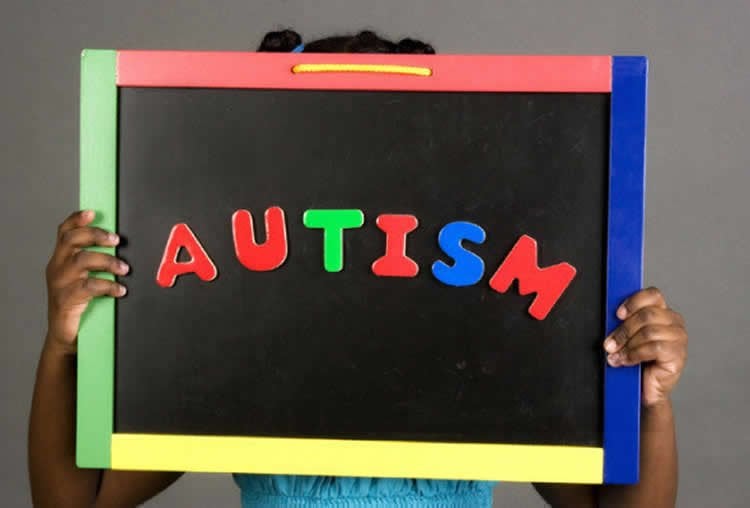Summary: GABA receptor modulating drug has been shown to reverse both social and cognitive deficits induced by a genetic mutation associated with autism and intellectual disabilities, researchers report.
Source: University of Nebraska Medical Center.
A breakthrough in finding the mechanism and a possible therapeutic fix for autism and intellectual disability has been made by a University of Nebraska Medical Center researcher and his team at the Munroe-Meyer Institute (MMI).
Woo-Yang Kim, Ph.D., associate professor, developmental neuroscience, led a team of researchers from UNMC and Creighton University into a deeper exploration of a genetic mutation that reduces the function of certain neurons in the brain.
Dr. Kim’s findings were published in this week’s online issue of Nature Neuroscience.
“This is an exciting development because we have identified the pathological mechanism for a certain type of autism and intellectual disability,” Dr. Kim said.
Recent studies have shown that the disorder occurs when a first-time mutation causes only one copy of the human AT-rich interactive domain 1B (ARID1B) gene to remain functional, but it was unknown how it led to abnormal cognitive and social behaviors.
Autism spectrum disorder (ASD) impairs the ability of individuals to communicate and interact with others. About 75 percent of individuals with ASD also have intellectual disability, which is characterized by significant limitations in cognitive functions and adaptive behaviors.
There are no drugs or genetic treatments to prevent ASD or intellectual disability; the only treatment options focus on behavioral management and educational and physical therapies.
The team created and analyzed a genetically modified mouse and found that a mutated Arid1b gene impairs GABA neurons, the ‘downer’ neurotransmitter, leading to an imbalance of communication in the brain.
GABA blocks impulses between nerve cells in the brain. Low levels of GABA may be linked to anxiety or mood disorders, epilepsy and chronic pain. It counters glutamate (the upper neurotransmitter), as the two mediate brain activation in a Yin and Yang manner. People take GABA supplements for anxiety.

“In normal behavior, the brain is balanced between excitation and inhibition,” Dr. Kim said. “But when the inhibition is decreased, the balance is broken and the brain becomes more excited causing abnormal behavior.
“We showed that cognitive and social deficits induced by an Arid1b mutation in mice are reversed by pharmacological treatment with a GABA receptor modulating drug. And, now we have a designer mouse that can be used for future studies.”
Next steps for Dr. Kim and his team are to even further refine the specific mechanism for autism and intellectual disability and to identify which of the many GABA neurons are specifically involved.
Funding: Dr. Kim’s research was supported by a $1.7 million grant from the National Institute of Neurological Disorders and Stroke and a $400,000 Institutional Development Award (IDeA) from the National Institute of General Medical Sciences of the National Institutes of Health.
Team members were: Eui-Man Jung, post-doc research associate, and Channabasavaiah Gurumurthy, Ph.D., associate professor, MMI; Jeffrey Jay Moffat, graduate research assistant, pharmacology/experimental neuroscience, UNMC; and Shashank Dravid, Ph.D., associate professor, and Jinxu Liu, pharmacology, Creighton University.
Source: Liz Kumru – University of Nebraska Medical Center
Publisher: Organized by NeuroscienceNews.com.
Image Source: NeuroscienceNews.com image is in the public domain.
Original Research: Abstract for “Arid1b haploinsufficiency disrupts cortical interneuron development and mouse behavior” by Eui-Man Jung, Jeffrey Jay Moffat, Jinxu Liu, Shashank Manohar Dravid, Channabasavaiah Basavaraju Gurumurthy & Woo-Yang Kim in Nature Neuroscience. Published online November 6 2017 doi:10.1038/s41593-017-0013-0
[cbtabs][cbtab title=”MLA”]University of Nebraska Medical Center “Potential Treatment For Autism and Intellectual Disability.” NeuroscienceNews. NeuroscienceNews, 13 November 2017.
<https://neurosciencenews.com/autism-intellectual-disability-7930/>.[/cbtab][cbtab title=”APA”]University of Nebraska Medical Center (2017, November 13). Potential Treatment For Autism and Intellectual Disability. NeuroscienceNews. Retrieved November 13, 2017 from https://neurosciencenews.com/autism-intellectual-disability-7930/[/cbtab][cbtab title=”Chicago”]University of Nebraska Medical Center “Potential Treatment For Autism and Intellectual Disability.” https://neurosciencenews.com/autism-intellectual-disability-7930/ (accessed November 13, 2017).[/cbtab][/cbtabs]
Abstract
Arid1b haploinsufficiency disrupts cortical interneuron development and mouse behavior
Haploinsufficiency of the AT-rich interactive domain 1B (ARID1B) gene causes autism spectrum disorder and intellectual disability; however, the neurobiological basis for this is unknown. Here we generated Arid1b-knockout mice and examined heterozygotes to model human patients. Arid1b-heterozygous mice showed a decreased number of cortical GABAergic interneurons and reduced proliferation of interneuron progenitors in the ganglionic eminence. Arid1b haploinsufficiency also led to an imbalance between excitatory and inhibitory synapses in the cerebral cortex. Furthermore, we found that Arid1b haploinsufficiency suppressed histone H3 lysine 9 acetylation (H3K9ac) overall and particularly reduced H3K9ac of the Pvalb promoter, resulting in decreased transcription. Arid1b-heterozygous mice exhibited abnormal cognitive and social behaviors, which were rescued by treatment with a positive allosteric GABAA receptor modulator. Our results demonstrate a critical role for Arid1b in interneuron development and behavior and provide insight into the pathogenesis of autism spectrum disorder and intellectual disability.
“Arid1b haploinsufficiency disrupts cortical interneuron development and mouse behavior” by Eui-Man Jung, Jeffrey Jay Moffat, Jinxu Liu, Shashank Manohar Dravid, Channabasavaiah Basavaraju Gurumurthy & Woo-Yang Kim in Nature Neuroscience. Published online November 6 2017 doi:10.1038/s41593-017-0013-0







